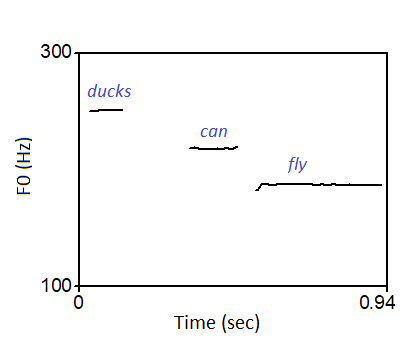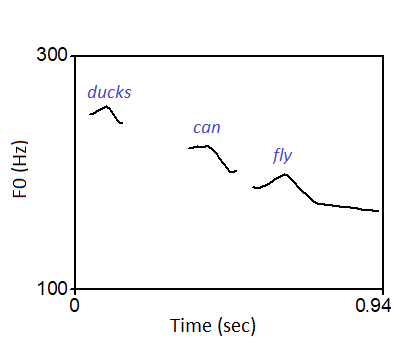Can speech ever sound like song? Seemingly impossible, the “Speech-to-Song illusion” (S2S) is a striking example of a perceptual transformation effect where a spoken phrase repeated several times shifts to being heard as sung without any change to the speech sounds. Our previous work revealed that sound acoustics play a crucial role in S2S. While the acoustic shape of the spoken phrase has to remain unchanged during repetitions, some pitch and timing properties of the phrase are more supportive of the perceptual transformation than other. For example, compare tracks of the fundamental frequency on the left (flat) and on the right (dynamic). They both show the same spoken phrase, “Ducks can fly”. However, the phrase on the left is likely to transform into song quicker and easier for most people.


History
S2S was coined by the psychologist Diana Deutsch who included a looped phrase “but they sometimes behave so strangely” on her CD, “Phantom Words and Other Curiosities” (published in 2003). Although this phenomenon has been well known to musicians for a long time (cf. works by Steve Reich and others), it has started to attract researchers’ attention over the last decade, with recent publications from linguistics and psychology increasing in numbers.